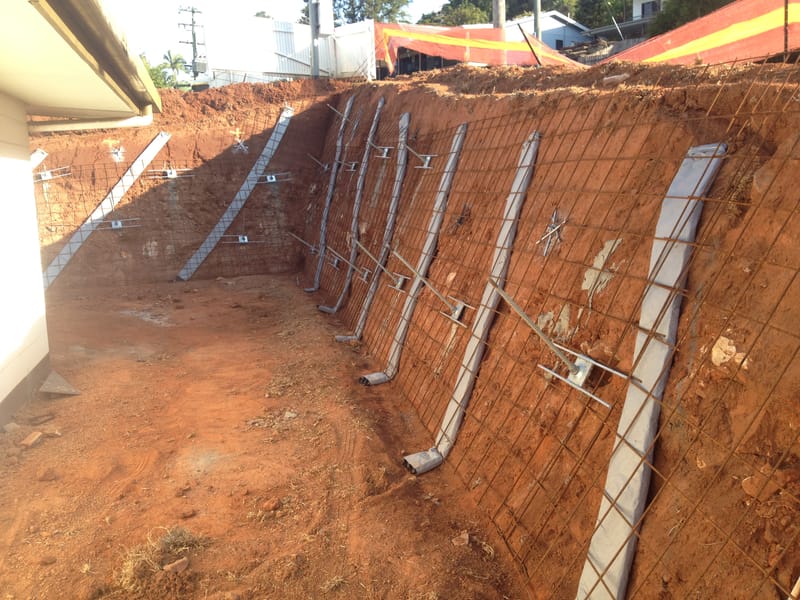Check Out the Full Range of Williams Anchors for Superior Ground Stablizing
Check Out the Full Range of Williams Anchors for Superior Ground Stablizing
Blog Article
Reliable Rock Anchors for Secure and Stable Structures
In the realm of civil design, the role of trustworthy rock supports can not be overemphasized, as they are pivotal in developing safe and secure and secure foundations throughout a variety of applications. Recognizing the different kinds of rock supports, their certain applications, and the intricacies of setup and maintenance is necessary for maximizing their performance.
Kinds of Rock Anchors

Easy supports count on the weight of the framework and the surrounding dirt or rock to offer resistance. They are typically made use of in applications where very little activity is expected. Active anchors, on the other hand, entail the application of stress via a high-strength cable television or pole, creating a pre-stressed condition in the anchor. This type is especially beneficial in dynamic environments, such as landslide-prone areas.
Grouted anchors are one more substantial category, wherein a steel bar or wire is placed into a pierced hole, adhered to by a cementitious grout. Once cured, the cement bonds with the bordering rock, developing a durable anchoring system. Each kind of rock anchor uses unique benefits based upon the certain geological conditions and architectural requirements, thus playing a vital duty in the total integrity and long life of built centers.
Applications in Building And Construction
Rock supports play a crucial role in different construction applications, providing necessary assistance and stability in varied atmospheres. These innovative remedies are used in jobs ranging from large-scale framework advancements to smaller property structures. Among the key applications of rock anchors remains in the stablizing of inclines and maintaining walls, where they aid stop soil erosion and maintain structural integrity.
Additionally, rock anchors contribute in securing foundations for bridges, tunnels, and high-rise buildings, ensuring they can withstand side forces such as wind and seismic task. Their versatility enables setup in challenging geological conditions, making them ideal for tasks in mountainous or rough surfaces.

Key Choice Requirements
Choosing the proper rock support for a particular application requires careful factor to consider of a number of essential requirements. The geological problems of the site need to be completely analyzed. Comprehending rock type, strength, and stability is essential to make certain that the anchor will perform efficiently under load problems.

An additional crucial aspect is the corrosion resistance of the anchor products. In atmospheres revealed to wetness or chemicals, utilizing corrosion-resistant materials will lengthen the life expectancy of the anchors and keep architectural honesty gradually.
Furthermore, the support's installation approach need to line up with the task's needs and restraints. Relieve of installation, along with the possible influence on surrounding frameworks, must be considered.
Setup Methods
Efficient installation strategies are vital for the effective efficiency of rock anchors. Proper installment ensures that the anchors accomplish the wanted load-bearing capability and security within the geological problems. The very first step in the installment procedure entails site analysis, where geological studies determine the rock type, problem, and any kind of possible difficulties.
Once the site is examined, the appropriate exploration technique need to be picked-- alternatives include rotating boring, diamond boring, or percussion exploration. The choice relies on rock firmness and environmental considerations. Exact exploration depth and angle are necessary to make certain that the anchors line up with structural needs and load distribution.
After drilling, the following stage entails cleaning the borehole to remove debris, which can compromise bond strength. Following this, the anchor is find placed, and if called for, a cement or material is infused to enhance adhesion. The curing time of these products have to be abided by, ensuring that the anchors achieve full stamina before any kind of load is used.
Maintenance and Evaluation
Appropriate upkeep and examination of rock anchors are necessary to guarantee their lasting performance and reliability (Williams Anchors). Normal assessments assist determine any kind of potential issues, such as rust, displacement, or architectural fatigue that can compromise the honesty of the anchoring system
Regular assessments need to be carried out at specified intervals, taking into account environmental factors and the details application of the rock supports. Visual inspections ought to concentrate on the revealed sections of the supports, looking for indications of rust, splits, or various other abnormalities. In addition, it is essential to assess the surrounding geological problems to spot any shifts in dirt or rock that might affect anchor performance.
In many cases, even more advanced methods such as load testing or non-destructive screening might be required to identify the anchors' load-bearing capability and total health and wellness. Correct paperwork of examination findings, maintenance tasks, and any repair work or replacements performed is important for recurring evaluation and compliance with sector standards.
Verdict
To conclude, dependable rock anchors play a vital function in site here guaranteeing safe and secure and steady foundations across various building applications. By efficiently moving tons and boosting security versus lateral pressures, these anchors contribute considerably to the durability and integrity of structures such as bridges, tunnels, and maintaining wall surfaces. Strategic choice, installment, and maintenance of rock anchors are crucial for optimizing efficiency and guarding browse around this web-site public safety and security, ultimately emphasizing their significance in contemporary design methods.
Report this page